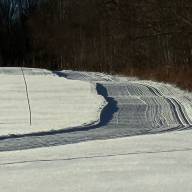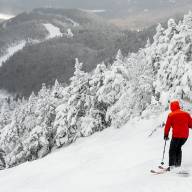By Tracy Brannstrom
At the April 1 Moretown Select Board meeting, Moretown town forester Mike Brown fielded questions about a draft version of the town’s 10-year plan for 173.5 acres of town-owned forest.
The Town Forest Management Plan, which includes recommendations for managing the land, was last updated in 2010. It gets revisited every decade, but was delayed by the COVID-19 pandemic. The Town Forest committee, including Brown, started meeting in the summer of 2022 to work on the plan.
This version is still in draft form, with more work that needs to be done in terms of complying with the conservation easement on 116 acres held by the Vermont Land Trust (VLT). Brown said that there are no drastic changes to the plan from the previous version.
The harvesting of trees from four areas will not begin until 2026 – including the clearing of hazardous trees surrounding Moretown Elementary School’s ECO classrooms. The plan also strongly recommends clearly marking the boundaries of town-owned land with flags and paint during this management cycle to prevent confusion about property lines going forward.
1928 OWNERSHIP
The town took ownership of the forest in 1928. The conservation easement with the VLT was added to a portion in 2008, with additional acreage added in 2011. The land is located between Route 100B and South Hill Road, with tMoretown Elementary School and Moretown town office in the western part of the property.
The draft plan says that the health of the forest is typical. Sections of hardwood trees show some beech bark disease – the result of an invasive insect and a native fungus, which weaken and eventually kill trees. There is also damage from the white pine weevil, which targets sapling buds to lay its eggs, killing the bud and forcing lateral branches to take over, resulting in a crooked or multi-stemmed tree. However, this degrades its timber quality rather than affecting the health of the tree.
The plan also includes a brief history of forestland in Vermont – summarizing how forests covered 95% of the state prior to European settlement, and cover more than three-quarters today. The 1800s saw large-scale forest clearing for agricultural use, depleting land by the end of the 19th century. Slowly, forests began to reclaim these sites, stabilizing the soil and overall ecosystems. Some sites were planted with softwoods to prevent erosion.
Natural disturbances also played a role in shaping the forest – including an ice storm in 1998 and the 1938 hurricane, when Vermont sustained some of the highest winds and lost a record amount of timber.
The Town Forest committee will continue to work on the draft and once finalized, management of the forest will fall to the Recreation Committee.
You might also like













